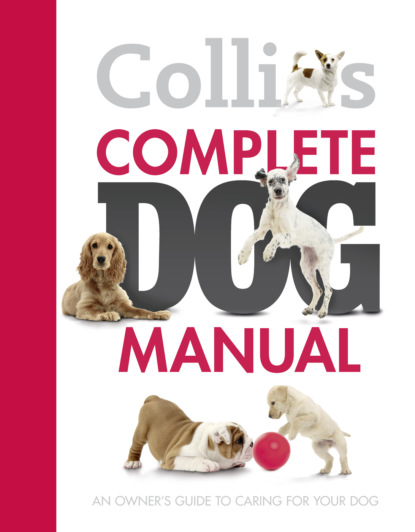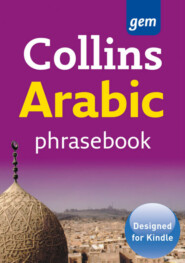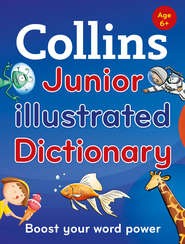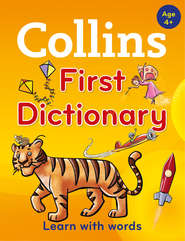По всем вопросам обращайтесь на: info@litportal.ru
(©) 2003-2025.
✖
Collins Complete Dog Manual
Настройки чтения
Размер шрифта
Высота строк
Поля
5. Rubber rings and toys: Perfect for tug and fetch
6. Frisbees and tennis balls: Ideal for playing outdoor fetch
Do not play tug of war with a soft toy – you will be training your puppy to be destructive and possessive. All dogs can be taught to play with a ball but be careful that the ball is not too small. Dogs’ jaws can open very wide and they can swallow quite large objects. If they should accidentally swallow a rubber or plastic ball the consequences can be very serious. Do not give your puppy an old shoe or slipper to chew and destroy – dogs notoriously ignore the difference between old and new shoes.
Throw a ball just in front of him, then make a fuss when he returns it and persuade him gently to ‘drop’. When he is proficient at retrieving, hide the ball for him to find, close by to start with but gradually increasing the distance.
Games you can play
Games for dogs are invariably those of catch, retrieve and hide-and-seek. Dogs derive the most fun out of chasing and retrieving balls. However, the one proviso is to ensure that the ball is not too small in case it slips down a dog’s throat and chokes him. Start when your dog is a young puppy.
Another good game is to teach your dog to ‘find your child’. Some dogs love to push a football with their nose, and kids can play footie with their pet. Quoit rings are fun to throw and pull but the ultimate throwing game is with a Frisbee. Dogs get great exercise running and leaping for it.
Good pet shops will have a variety of toys, and you should choose those that are said to be indestructible with no metal or plastic. The Kong is particularly good: this is a hollow, eccentrically shaped ball which can be stuffed with food titbits. Your dog will chase it happily for hours, trying to get the food out. Nylon bones keep dogs occupied as well as keeping their teeth clean.
Socialization
When a puppy faces something he has never encountered before his first instinct is to run, and it is up to you, his owner, to socialize him in such a fashion that he will not be scared of anything. He should not be over-protected from any household noises, and it is a good idea to get him accustomed to the sound of such appliances as the vacuum cleaner, dishwasher, radio, television and washing machine. In fact, even dropping a dustbin lid about 5 m (15 ft) away from him is not a bad idea.
After his vaccinations, you must introduce him to the people who visit your house regularly: the postman, the milkman and the refuse collectors. Let your friends and neighbours handle him and, when he is old enough, take him into town or to the market and let him mix with people, always on the lead and under your control.
Puppy socialization classes are sometimes a good way of getting him used to meeting other dogs as well as a wide range of people. Ask your vet for the details of your nearest class. They are now widespread in most areas.
Exercise
Young puppies get all the exercise that they require from their own exuberance when running and playing, and there is no need for formal exercise. In fact, it could harm a puppy’s development if he is forced into too much activity at too young an age. The age at which it is necessary varies from breed to breed, but the average is probably at between five and six months – the breeder or your vet can advise. For a large dog, such as an Irish Wolfhound, too much exercise can be positively harmful for a growing puppy whose bones are still growing. It is also a good idea to start taking your puppy for short walks on the lead.
Like many other giant breeds, Irish Wolfhound puppies should not exercise excessively before the age of six months. Let them play in the garden rather than take them for long walks. (Kachalkina Veronika)
You can teach your puppy some simple but essential commands, such as ‘Sit’, ‘Stay’ and ‘Come’, at home (see here (#litres_trial_promo)). More your dog is ready for formal training it is advisable to attend obedience classes at your local dog training school where there will be some knowledgeable trainers on hand.
Social Responsibilities
Behavioural scientists have proved that without doubt the ownership of a dog is beneficial to adults and particularly to children, but in the light of today’s social attitudes an owner must train a dog to fit into modern society’s perception of what constitutes acceptable social behaviour. The law is becoming unreasonably harsh when dealing with those it considers transgressors.
The 1991 Dangerous Dogs Act in the UK has given the courts the power of what is in effect a mandatory death sentence on any dogs which are judged to have contravened its stipulations. Nobody wants a dangerous dog on the loose but under this law a dog does not have to be deemed dangerous in the accepted sense; the police have only to accuse it of looking dangerous for it to suffer the death penalty. A reverse of the burden of proof applies, which means that the dog is guilty before being found guilty, effectively preventing a defence no matter how trivial the alleged offence. Thus it behoves every dog owner to make certain that they do not fall foul of this law.
Councils and local authorities are also taking a tougher stance by introducing new dog ‘no-go’ areas, especially on beaches and parks, and are also enforcing new ‘dog fouling’ by-laws under which dog owners can be fined should they allow their dog to foul public places without picking up the mess. There are many hygienic methods of doing this and various gadgets can be obtained from pet shops to pick up dog faeces. Owners would be wise to always carry something with which to scoop dog mess up, even if it’s just a plastic bag, when they’re out walking their dogs.
Always come prepared to clear up after your dog. (Francesco83)
At the time of publication of this book there is no legislation requiring a dog owner to either license or register a dog. However, a special committee is sitting in the UK to examine the situation and report their findings. If they find in favour of registration, all owners may have to pay to get their dogs tattooed or micro-chipped for the purposes of identification.
However, despite these minor obstacles, sharing your life with a dog more than compensates for all the difficulties, for he will be your loyal friend and companion through all your tribulations.
(It’s Me Or the Dog © HarperCollins/ © Mark Read)
(Ashley Western/www.phodographer.biz)
(Ashley Western/www.phodographer.biz)
No matter what sort of dog you choose, be it a pedigree or a mongrel, it can enrich your life and become part of your family. (Ashley Western/www.phodographer.biz)
Giving a rescue dog – here an eager mongrel – a good home is a rewarding experience for both the dog and owner. (© Jean Michel Labat)
Two Labradors at a rescue centre. You might want to take both ... but can only support one. (© Jean Michel Labat)
Eight-week-old Parson Jack Russell Terrier puppies: pedigree puppies can set you back several hundred pounds. (© John Daniels)
A litter of four Golden Retriever puppies suckling. (Ruta Zukauskaite)
This six-month-old Dalmatian bitch glows with health: bright eyes, white teeth, with moist, light-pink tongue and dark, damp nose. (It’s Me Or the Dog © HarperCollins/ © Mark Read)
When you get home, make sure your puppy has a warm, comfortable bed and some toys to play with. You don’t need a proper basket – a cardboard box will suffice. (Patryk Kosmider)
Although puppies (here white West Highland Terriers) appear to have boundless energy and love playing, they spend a lot of time resting, too. (Anna Lurye)
Young dogs may well damage your precious furnishings if you don’t provide them with safe things to chew, like a cardboard box or some chew toys – which have the added benefit of improving mouth health and teeth strength. (Erkki Alvenmod)
(Milles Away)
Siberian Husky (Nata Sdobnikova)
Trips to the vet can be daunting experiences for dog and owner alike. (Byelikova Oksana)
Let your puppy wander about with the lead on to get him used to it but watch him carefully in case the lead gets caught up on something. (Eldad Carin)
To get your puppy used to traffic and road walking, carry him in your arms for a day or two before walking on the pavement. (Christian Mueller)
Do not play tug of war with a soft toy but use a dedicated tug toy (as here) – or you will be training your puppy to be destructive and possessive. (Anna Hoychuk)
Most young dogs enjoy playing ‘fetch’ with a ball or other toy. It allows them to run freely and have some fun. (Ksenia Raykova)
This West Highland White Terrier puppy is meeting some older dogs. Most adult dogs will not be aggressive to young puppies. (Zuzule)
(It’s Me Or the Dog © HarperCollins/ © Mark Read)
Dog Breed Guide (#ulink_9d20dd8f-ccad-52f8-91e0-d0a91b388e86)
Gundogs (#ulink_9b1fbf77-4a91-56f2-99d7-2946f4eba464)
Hounds (#ulink_5363f9cd-b4d3-554c-ab44-0ae6edca586d)
Working Dogs (#ulink_c7eed37a-8b08-5e6f-a041-7c8487fa54c1)
Terriers (#ulink_d179f494-9cb6-506c-ba59-e2ce0cacc2f8)
Toy Dogs (#ulink_a7982f6b-8f2d-5a64-bcf8-041ff6cd88c9)











